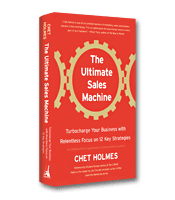Do You Have Happy Non-Performers?
 I was excited to get confirmation recently that Rasmus Ankersen will be speaking at the EO Argentina University in November. I saw him speak at the EO India Conference a few years ago and his discussion stuck out in my head. Matt Stewart and I, as Learning Co-chairs, along with Joy Hayes and Leslie Baum at EO Global, discussed how he would be a good fit for our theme for the University of “Tango with the Unexpected.”
I was excited to get confirmation recently that Rasmus Ankersen will be speaking at the EO Argentina University in November. I saw him speak at the EO India Conference a few years ago and his discussion stuck out in my head. Matt Stewart and I, as Learning Co-chairs, along with Joy Hayes and Leslie Baum at EO Global, discussed how he would be a good fit for our theme for the University of “Tango with the Unexpected.”
I have written about Rasmus a while back, with his research being very interesting on how to spot talent. He will share some of his new material with us. I found some of his recent blogs posts insightful and thought I would give a taste of what will show up at the University.
You would probably find it contradictory, as I did, that some of your happiest employees are your worst performers. Ramsus was looking at a study that said the lowest performers were even more likely to recommend your company over others in the organization. Wow! Does that make you stand up and say, “What!?”
Rasmus attributes this to a lack of managers’ courage to confront employees who are just not making it happen or getting it done. We seem to want to block it out and not confront their performance, thus avoiding conflict. This acceptance of low performance or ignoring it doesn’t serve any purpose, except to keep the low-performing person happy.
Does not managing these low performers serve the company, organization or other members of the team? We know the answer to that, but what we may not know is that this drags down the culture to accept lower standards. I just wrote a blog on how culture is the most important thing in great companies, so does this motivate owners and managers in dealing with low performers? Rasmus sarcastically asked the question, “Do you help people perform better or do you help them to feel better about performing bad?”
These universities are an amazing experience. This one was a little different for sign-ups, in that each region of the world was given different time zones to register. We signed up 415 members and have 160 on the wait list. Registration went as fast as 3 minutes, to up to 4 hours in other regions. This is a great experience to be on board, helping to create one of these amazing events.





